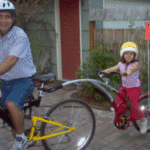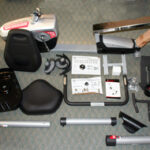Sewing is one of those skills my mom felt obligated to teach me as a child. At that time, I wasn’t interested in pursuing the craft. Flash forward a few (okay, more than a few) years later and I am hooked on sewing.
When I started sewing again it wasn’t like riding a bike. I could not remember anything my mom taught me. I did some research on the Web to determine what I needed to get started. Armed with all of my sewing tools, I plunged right into sewing with a pattern that claimed to be “easy.” It turned out to be quite an interesting experience. The easy shirt was not so easy to make. To make matters worse, I hated the style of the shirt. My first sewing project ended up at Goodwill and I ended up discouraged.
No, I didn’t pack up my sewing machine. I kept going, learning how to sew by trial and error. Here are some beginner sewing tips that will help make your sewing more enjoyable and discouragement free.
Sew in Stages
I sew in stages. I have discovered sewing in stages minimizes mistakes and keeps me interested in my sewing project. Stage One involves washing the fabric, reading the pattern, and cutting the pattern pieces. Stage Two involves pinning the pattern pieces to the fabric, cutting the fabric, and marking the fabric. Stage Three is sewing the main body of the garment. Stage Four is for finishing hems, sewing on buttons, and adding any embellishments. Sewing in stages allows me to have several projects going at once without the risk of confusion.
Read the Pattern Instructions
Read the pattern instructions before you start sewing. Underline or highlight anything you might miss while you are in front of the sewing machine. Read the pattern instructions before you start cutting the fabric. It will show you how to lay out the fabric. Pay attention to whether the fabric is folded, how many pieces to cut, and the placement of the pattern on the fabric grain line. Read the pattern instructions (get the hint) before you start sewing each section. Once again, highlight or underline anything that you want to pay special attention to for that sewing section. I also like to make notes on the pattern instructions as I go along. Believe me, you will thank yourself for taking the time to make notes when you decide to use this pattern again.
Use your Needle
Use your sewing needle and thread to baste together pattern pieces before you sew. Hand basting will allow you to check the fit of your garment before using the machine to sew. It is much easier to rip out long hand sewn stitches than machine stitches. Hand basting will also lessen the chance of damaging your fabric. Pick up a block of beeswax from your fabric store to coat the thread. This will keep the thread from tangling. I usually buy cheap, bright colored sewing thread to use for basting. Hand basting has saved me tons of sewing time, especially with zippers and waistbands.
Iron Away
Your iron is your best sewing friend. Iron the pattern pieces (on low heat) before cutting. Iron your fabric before cutting. Press seams after sewing to set stitches and keep seams from puckering. Press hems up before sewing to ease any excess fabric and keep your hems flat. I keep the ironing board by my sewing machine while I am sewing. I use a pressing cloth to protect the fabric while pressing seams and hems. I also use a dressmaker’s ham for curved edges.
The most important thing to remember is that sewing is supposed to be fun. Turn on your sewing machine, slip in your favorite CD or DVD, grab a glass of wine, and enjoy the creative experience of crafting your own garments.





